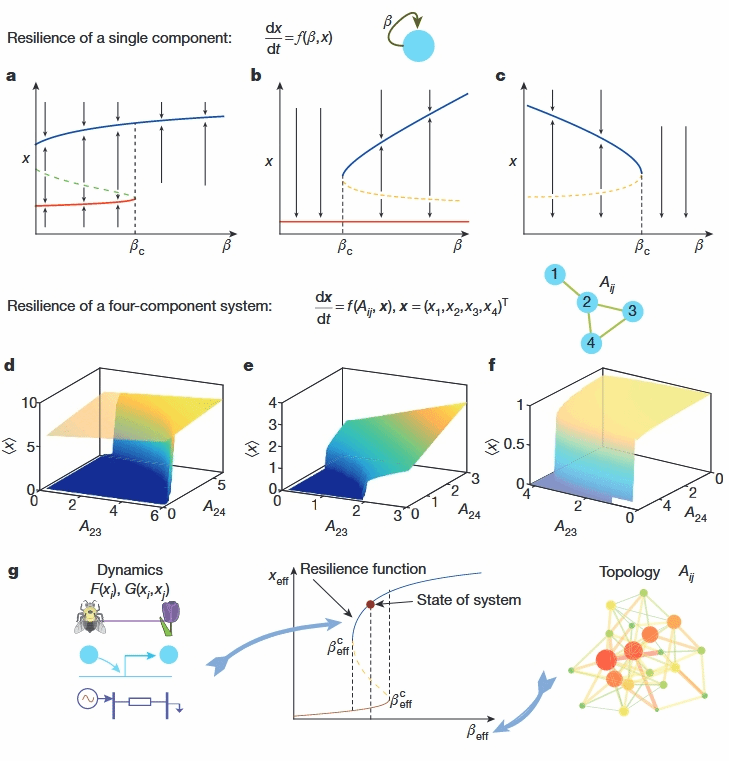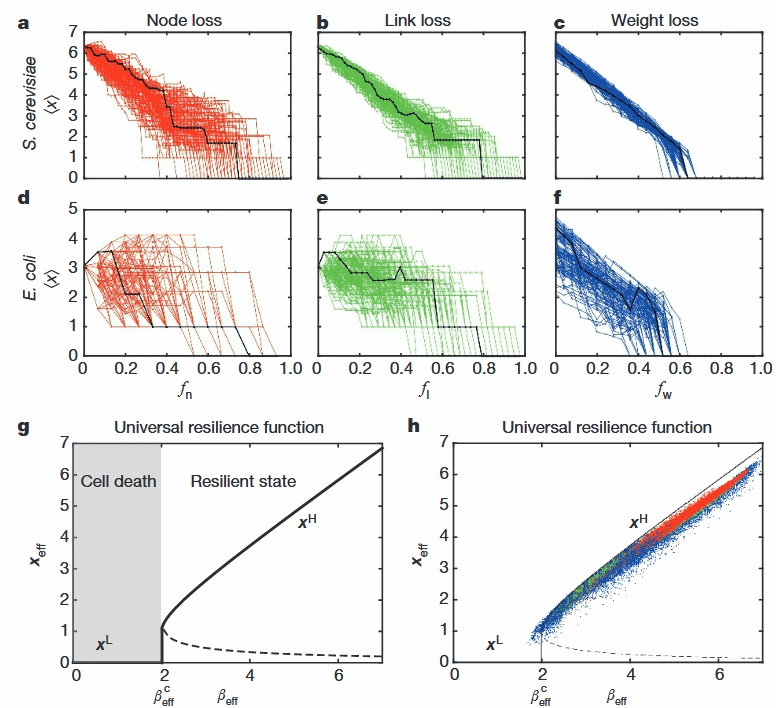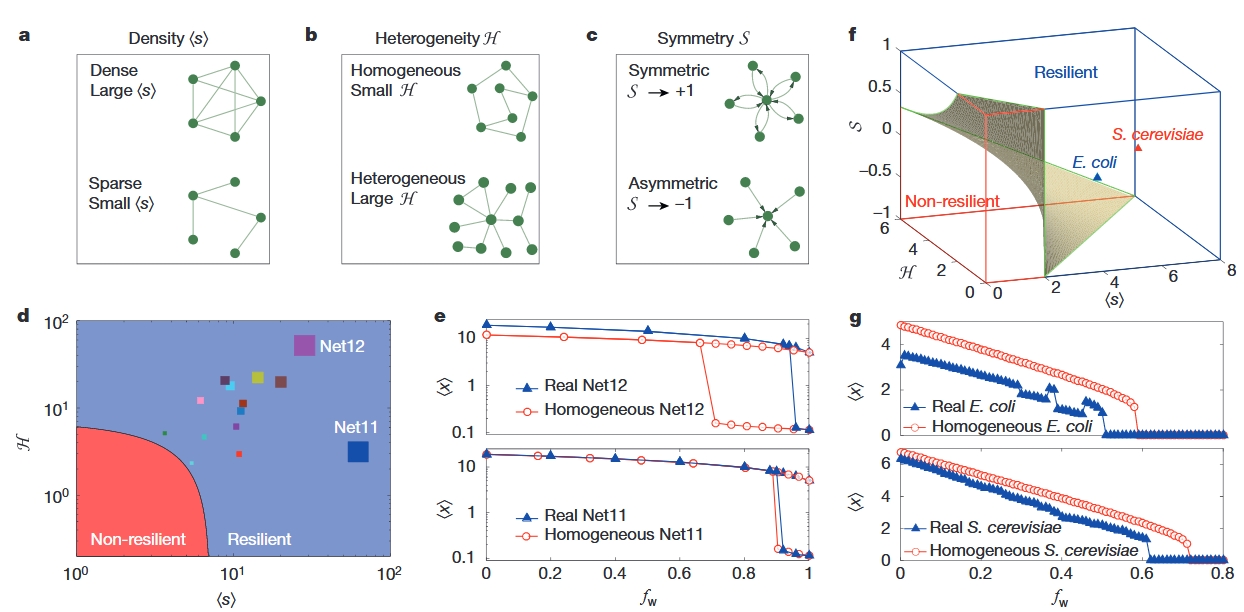文章信息:Gao, J., Barzel, B. & Barabási, A.-L. (2016). Universal resilience patterns in complex networks. Nature, 530, 307–312. https://doi.org/10.1038/nature16948
整理人:闫甲祺,2024级硕士研究生
整理时间:2024年11月30日
Abstract: Resilience, a system’s ability to adjust its activity to retain its basic functionality when errors, failures and environmental changes occur, is a defining property of many complex systems1. Despite widespread consequences for human health2, the economy3 and the environment4, events leading to loss of resilience—from cascading failures in technological systems5 to mass extinctions in ecological networks6—are rarely predictable and are often irreversible. These limitations are rooted in a theoretical gap: the current analytical framework of resilience is designed to treat low-dimensional models with a few interacting components7, and is unsuitable for multi-dimensional systems consisting of a large number of components that interact through a complex network. Here we bridge this theoretical gap by developing a set of analytical tools with which to identify the natural control and state parameters of a multi-dimensional complex system, helping us derive effective one-dimensional dynamics that accurately predict the system’s resilience. The proposed analytical framework allows us systematically to separate the roles of the system’s dynamics and topology, collapsing the behaviour of different networks onto a single universal resilience function. The analytical results unveil the network characteristics that can enhance or diminish resilience, offering ways to prevent the collapse of ecological, biological or economic systems, and guiding the design of technological systems resilient to both internal failures and environmental changes.
摘要:韧性是指系统在发生错误、故障和环境变化时调整其活动以保留其基本功能的能力,是许多复杂系统的一个定义属性。尽管对人类健康、经济和环境产生广泛影响,但导致复原力丧失的事件——从技术系统的级联故障到生态网络的大规模灭绝——很少是可预测的,而且往往是不可逆转的。这些限制源于理论差距:当前的韧性分析框架旨在处理具有少量交互组件的低维模型,并且不适合由通过复杂网络交互的大量组件组成的多维系统。在这里,我们通过开发一套分析工具来弥合这一理论差距,用这些工具来识别多维复杂系统的自然控制和状态参数,帮助我们得出有效的一维动力学,从而准确预测系统的韧性。所提出的分析框架使我们能够系统地分离系统动力学和拓扑的角色,将不同网络的行为折叠到单个通用韧性函数上。分析结果揭示了可以增强或减弱韧性的网络特征,提供防止生态、生物或经济系统崩溃的方法,并指导设计能够抵御内部故障和环境变化的技术系统
1.研究背景:
2.研究意义:
3.研究方法:
4.主要结论:
韧性的普遍性:不同网络的行为可以归结为一个单一的通用韧性函数,这个函数独立于网络拓扑结构,由系统的动态特性唯一确定。
网络特性对韧性的影响:网络的密度、异质性和对称性是影响系统韧性的三个关键结构因素。
预测和干预:通过分析β-space(自然参数空间),可以准确预测系统对多样化干扰的响应,并正确识别系统失去韧性的临界点。
5.研究展望:
6.研究主要图表:

01 网络韧性度量

02生态网络的韧性

03基因调控网络的韧性

04Aij 对韧性的影响
原文链接:https://www.nature.com/articles/nature16948
原文转引:https://mp.weixin.qq.com/s/6P5dfKDn8LLISPfWEiLqXA